Re: Como Roundhouse Addition
Posted by Jim Courtney on Aug 16, 2017; 4:38am
URL: http://c-sng-discussion-forum.254.s1.nabble.com/Como-Roundhouse-Addition-tp9120p9122.html
Keith's right, this interesting topic deserves its own thread.
How to start, perhaps a lot of copying and pasting?
We were admiring the color photos of Mike Trent's beautiful Dickey diorama when . . .
John McCrutchion asked:
What year did the engine house and some of the other accessory buildings disappear?
To which Mike replied:
Hi John, apparently, no records exist of the removal of the engine house. Could have been somewhat after 1920, but likely before.
John responded:
Do you have an idea why these structures were removed, was it more efficient engines or did it deal with traffic volume. Most of the latter photo's of Dickey just show the tank, section house, station and coaling dock. The reason I ask this is that the Sargent's engine house last much longer before it was removed. Got any idea's. By the way I find Dickey to be one of the most interesting locations on the C&S because of it's junction.
Chris Walker then steered the discussion in an unexpected direction:
John,
As far as I have read, the sections of enginehouse were combined to make the Roundhouse Wooden extensions at Como, the two pictures I put up shows very early t-o-c paint styles visible, so way earlier than the '20's. For pictures see:
http://c-sng-discussion-forum.41377.n7.nabble.com/Denver-to-Como-tp6568p6791.html
Mike then began the discussion in earnest:
Chris, that would be interesting. I'm very familiar with the way that the add-on next to the roundhouse that eventually was burned down was configured. What it amounted to were three "stalls", two of which, #1 and #3, were pass through tracks to the turntable from the north. The middle stall may have passed through at one time, but there was no track leading from that stall in later years. The furthest, #3, had no doors on either end, which would have made things very cold in the winter. The stall next to the stone wall did have doors on both ends, and had been extended in length for the Rotary. The side wall facing the depot had an odd angle, and photos are rare. It does appear as though the narrow windows along the length of both sides of the angled wall and the spacing could be consistent with the Dickey Engine House. I'd never noticed that before, and had never heard this. But it sure looks as though it's a real possibility.
By the way, I have not been able to see anything in any of the three pictures that are in the page you linked to that make any sense to this issue.
The best photo, by far, of the later addition to the Como Roundhouse is on page 298 0f the Pictorial Supplement. I'm sure it exists here somewhere. Yep. Found it. Jim posted this in a thread about the water tank.
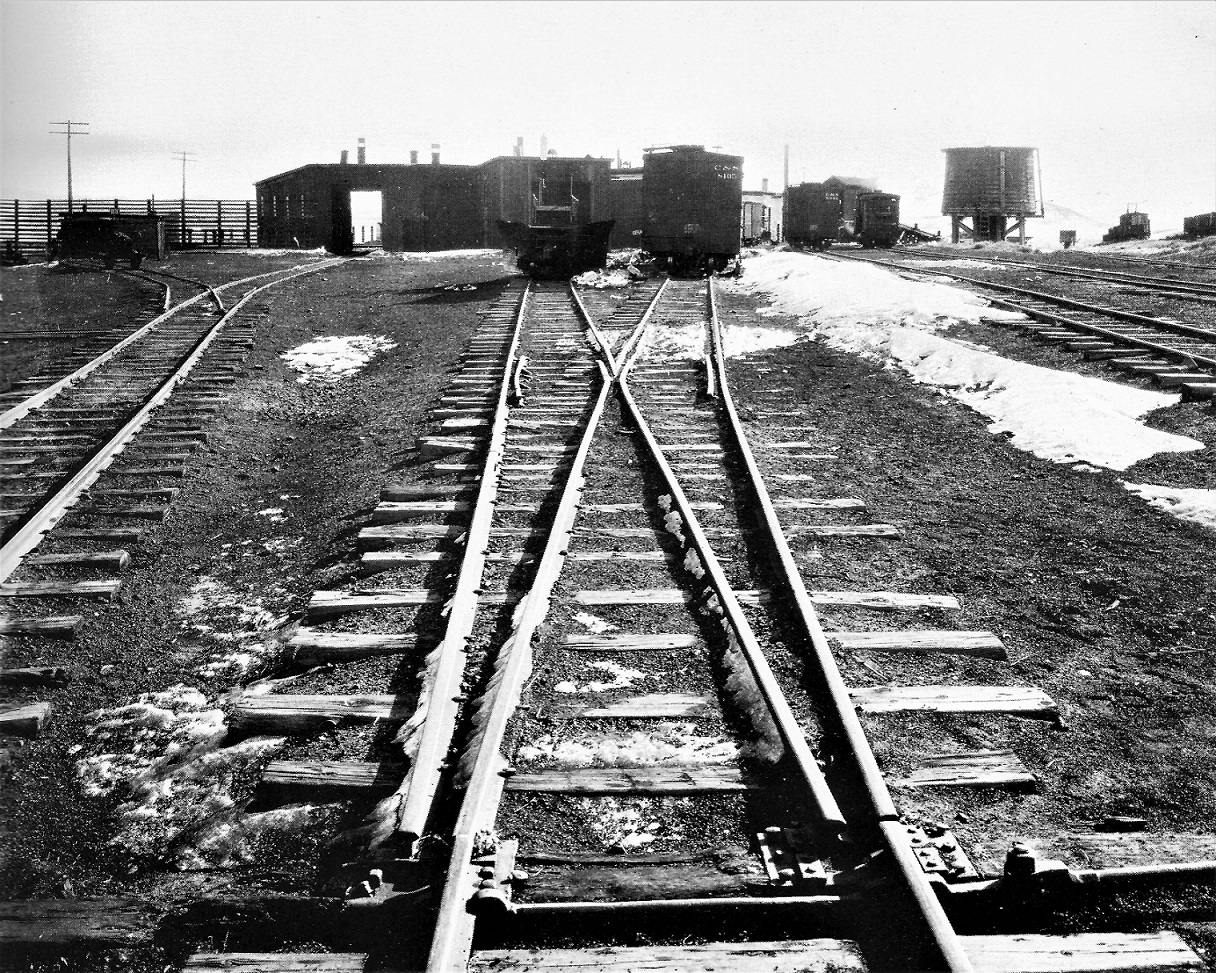
The wall to the left side runs at an angle toward the snow fence, and then angles toward the turntable. These are the windows that look very much like those from the Dickey Engine House. This addition also had six chimneys, and could well be the six that were at Dickey. You can see right through the stall, and it is clear that there were no doors on either end. The flanger (#015) sits on the track that leads to the rear door of the rotary stall. The space between the rotary stall and the open stall is closed on the end. When this burned, the rotary was facing the rear doors as was customary, #75 was resting nose first in the closed stall, and #72 was placed in the open stall, facing the turntable. All of the wood, including the entire sheathed body on the rotary was burned off. When the roof collapsed, #72's box style headlight (identical to that on #69), was destroyed and replaced with a much smaller Pyle headlight.
Chris then responded:
Jeff Ramsey related this about the Enginehouse: http://c-sng-discussion-forum.41377.n7.nabble.com/Help-dating-a-photo-of-Dickey-tp4645p4659.html
Then yours truly (completely misunderstanding what Mike and Chris are talking about) felt compelled to opine in his usual wordy manner:
Chris,
I fear I'll have to disagree with you here. I doubt that the materials from the C&S Dickey engine house were used in Como. There is photographic evidence that the wood extensions to the Como roundhouse were in place during DL&G times, by the mid to late 1890s at the latest.
Recall this beautiful photo that I believe Todd Hackett posted:
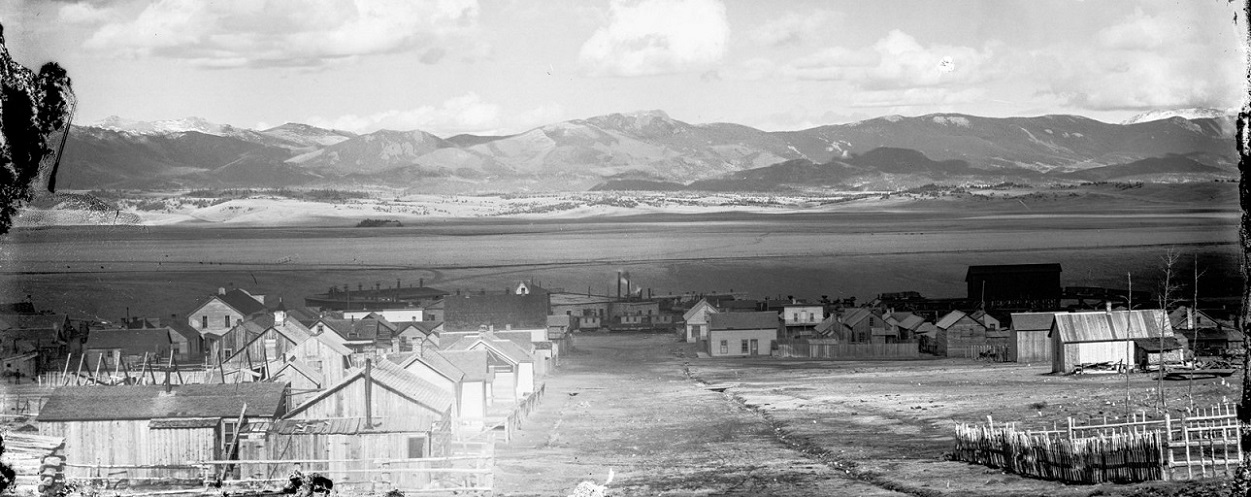
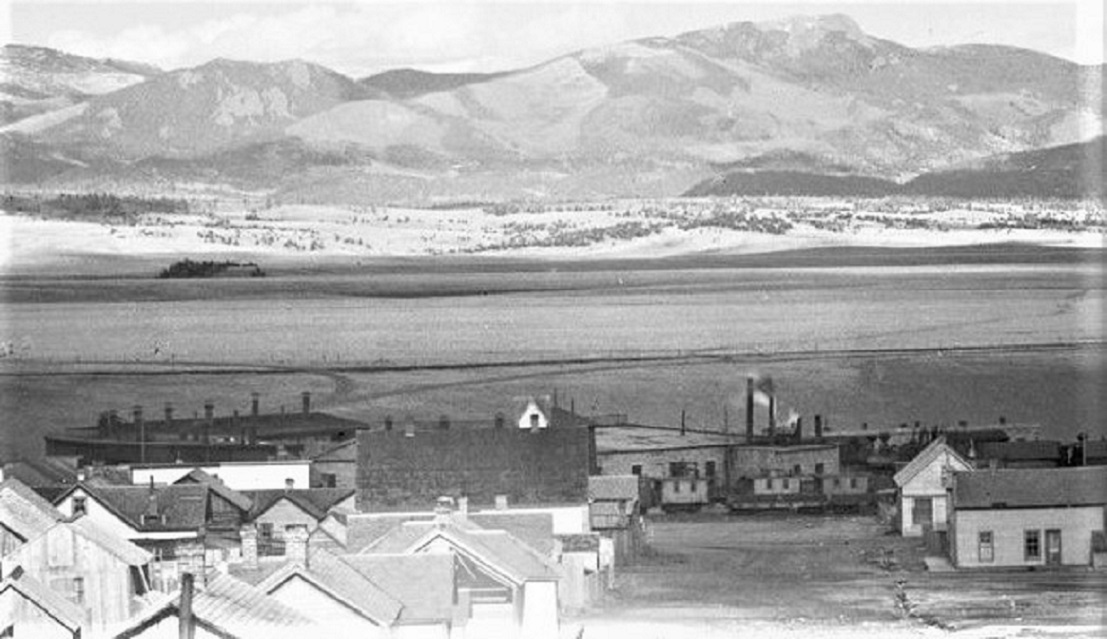
On enlargement, both diamond and McConnell stacked locomotives are present; the coal cars on the coal trestle and the boxcars hiding among buildings are lettered for the Union Pacific. And spotted just this side of the stone roundhouse are three cabooses in yellow DL&G / UP livery.
Jeff Ramsey alluded to an early engine house at Dickey in the above link -- I've never seen written reference to it. Perhaps it was demolished and the materials thrown into the construction of the Como roundhouse extension.
I'm not even sure when the 2 track engine house at Dickey was constructed. There are records of the coal chute being built in 1902, so I've assumed the engine house in Mike's Dickey was built about the same time, a C&S structure. That would have made Dickey a fully functional helper station, able to add helpers to both eastbound freights to Boreas and westbound freights headed up the Tenmile, and service the idle locomotives between runs.
I've never seen a reference to when the C&S engine house at Dickey was taken down. If I were to guess, I'd say early teens. Beginning in 1909, the new CB&Q management was determined to rid itself of the South Park Divisions. Alpine tunnel was abandoned in the fall of 1910, and a significant washout of the Trout Creek line about the same time was used as an excuse to abandon Garos to Buena Vista.
In the winter of 1910 the new Q management just stopped running trains over Boreas (last run October 31, 1910). Service returned for the summer months of 1911, but the line from Como to Breckenridge was not operated from the fall of 1911 until early 1913, when public and legal pressures forced the C&S to resume operations.
During this 1910-1913 hiatus in Boreas operations, the C&S ran a daily passenger train from Leadville to Breckenridge, with a side trip from Dickey to Dillon. Freights were run as extras as needed. This is the only photo of this period showing a Leadville-Breckenridge passenger train along the Blue:

Otto Westerman photo in Kindig, et al., The Pictorial Supplement . . .
Looks like one of the RPO-Coaches (40-43) and a coach in the two car consist behind number 61.
I suspect that after 1910, C&S (CB&Q) management never saw the need for a helper station at Dickey ever again, and the engine house wasn't likely used as such. But it was still there as late as 1918, according the C&S Valuation Maps of that year (copy in "Files" section of main blog). So, Mikes date of disappearance of the early 1920's might well be right.
I wasn't aware of an early (first) engine house at Dickey. Cliff Mestel's DSP&P / DL&G inventory doesn't show an engine house present between 1890 and 1895. More info anyone?
I also added an additional photo:
This is my favorite photo of the wood roundhouse extensions, from about 1906-1909:
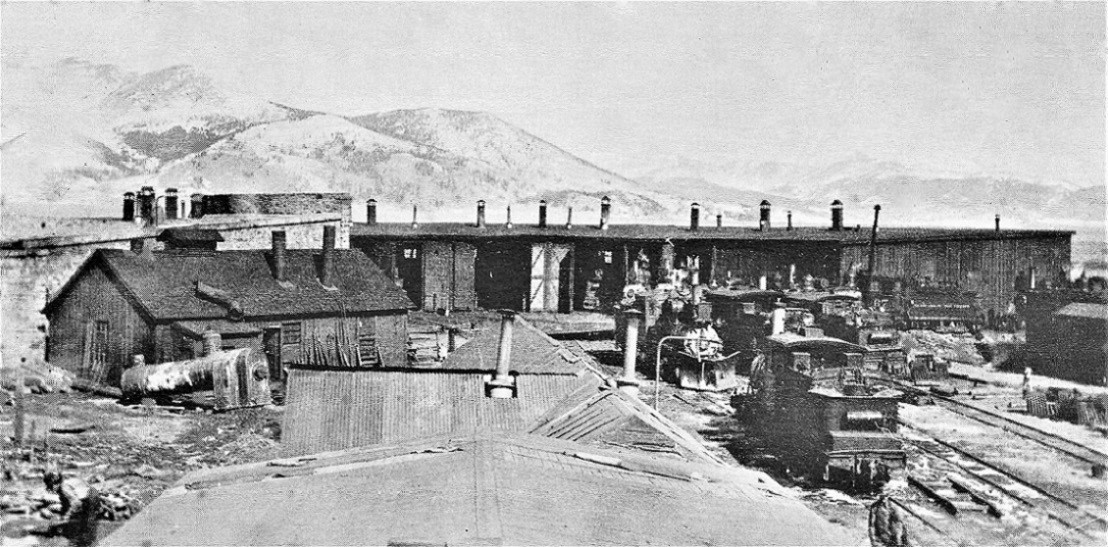
C.O. David photo, in CRA Number 12, page 115.
Seems to me that all the stalls have doors. Could it be that the "run-through" stalls were a later modification?
Then, Mike schooled me about what was really being discussed:
Jim, you are referring to the original very large wood roundhouse addition that was taken down in about 1910. What Chris and I are talking about is a second structure that may possibly have been partially a remnant of the large addition regarding the rotary stall and the adjacent stall. The pass through tracks were probably from the original large extension. Yard maps show pass through tracks during the time of the large wood stalls that almost enclosed the turntable.
What we are discussing is the second and final structure that burned in 1935 and is pictured in the photo I included, and that you posted originally. That wall facing the depot and the chimneys could very well have been constructed from material scavenged from the "second" ( if it was) Engine House at Dickey. It really doesn't matter if there was one or two at Dickey, the one we have pictures of was taken down sometime after 1910 and before 1920.
And Chris graciously responded to my post:
By all means please disagree Jim,
What I should have added was "on here" to my line, "I have read". I'm no expert on Como's Roundhouse, I was only going on what I read on here and I linked to Jeff's post once I found it, Jeff had also stated in another thread...
"When the second boiler was placed in service is unknown but it was after 1886 but before 1896. This second boiler was most likely needed when the first wood additions was added to the roundhouse that were relocated or reclaimed engine houses from Platte Canon and Dickey and when the machine shop was expanded. This shop expansion occurred around 1893, same year as the DL&G West Denver roundhouse and machine shop were taken offline." in here:
http://c-sng-discussion-forum.41377.n7.nabble.com/Como-Stationary-Boiler-tp4797p4842.html
I was under a (mis-taken?) thought that there was mention elsewhere perhaps in a discussion (on here) about the Platte Canon, of which I haven't yet found.
Stop Press.
Jim Courtney wrote
"In a typical Union Pacific management decision, the facilities here were deemed too efficient and were removed in 1893 or 1894, according to Derrell's article in the 2006 CNGQ. Derrell also speculated that an engine house might also have been located here, but I can't make one out. "; see here... http://c-sng-discussion-forum.41377.n7.nabble.com/Coal-and-Water-on-the-South-Park-tp1381p1452.html
I had noted that I had seen the earliest pictures that I remembered showing the early wooden extensions, I'd also noted that a certain Otto Perry picture was dated before the Wooden extension fire showed an anomaly to my impression that the Wooden extension fire burned all that was shown in this picture, something I've never read to the contrary, at least I can remember. It was your inclusion of the 1929 C&S valuation train photo shown on pg83 in Mineral Belt V-II that jogged my intrigue, hence my "musings later this evening" signoff.
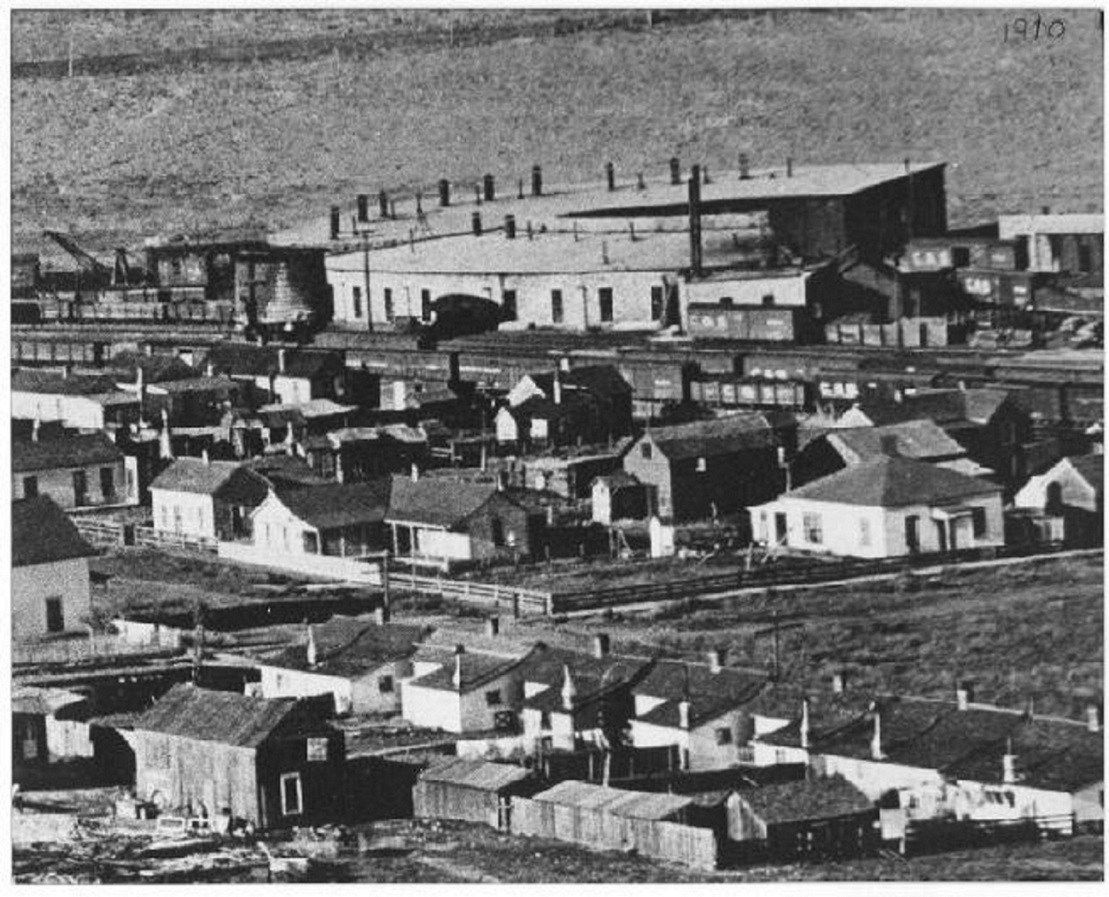
(sorry, this is my photo copy, not Chris's)
Enlarged from: http://www.narrowgauge.org/ngc/graphics/excursion4/gkazel/dspp-gk-007.jpg
Would someone who is of knowledge on this matter clarify how many Wooden stalls were standing prior the time of the fire, and anything they may know about the Demolition of the Wooden extensions, the part replaced by the snowfences behind the Boxcar bodies, prior to the downsized "through stalls" that burned in 1935.
I would find it odd that there were enough Wooden stalls added in what appears to be two distinct additions to form a half circle, then be removed after the abandonment of Trout Pass, then again several new(or reclaimed) "run through" stalls added before being consumed in the '35 fire. As Mike has noted, there are Windows resembling the Enginehouse side at Dickey, bear in mind that there would have been no wall there since it was an internal edge to a Stall , the roof being supported by posts. This now Exterior wall would have needed to have been sheathed and windows inserted after the other unused stalls were razed.
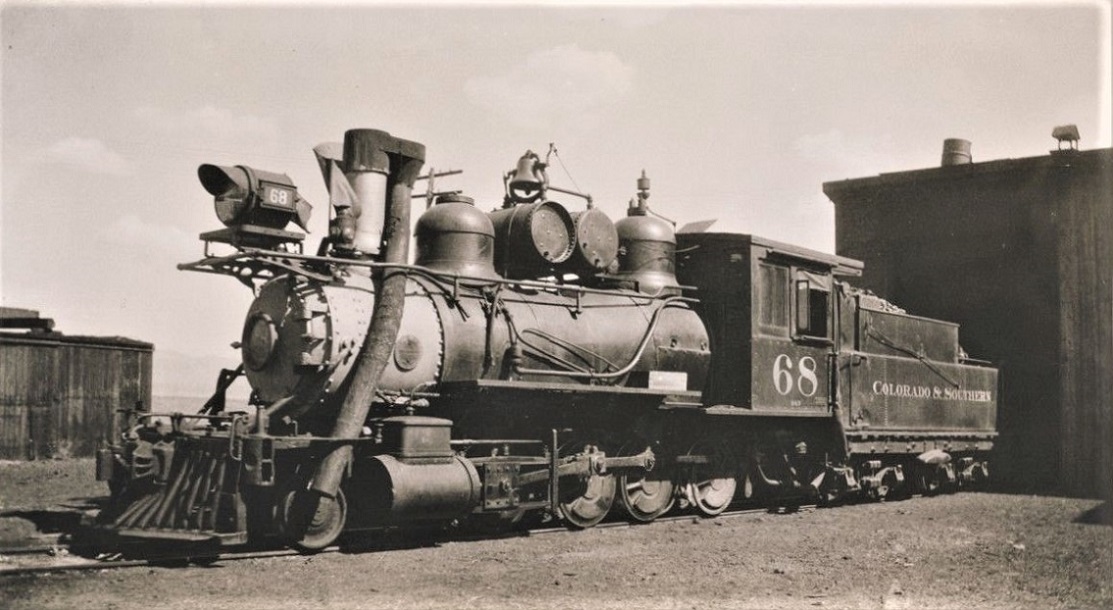
Lad G. Arend photo
Dare I ask the question; did those come from the razing of the Dickey Enginehouse? If the C&S is that short of money to require demolishing a large portion of Wooden Roundhouse, would they spend money shifting another other than salvaging of the materials and window casings?
Chris then posted two enlargements of DPL photos)
http://digital.denverlibrary.org/cdm/fullbrowser/collection/p15330coll22/id/5109/rv/singleitem/rec/42
http://digital.denverlibrary.org/cdm/fullbrowser/collection/p15330coll22/id/5113/rv/singleitem/rec/43
During the Droste Como Depot war, I noted several posters/participants relating to the presence of but not posting, the existence of early Como images that may timeline this better. Again, does anyone else care to share?
___________________________________________________________
So there, Keith, the entire discussion (to date) is no longer "gronded" to Mike's scenery post. I have some more thoughts to add, but it's late and off to bed I go, as the Hospital calls tomorrow.
URL: http://c-sng-discussion-forum.254.s1.nabble.com/Como-Roundhouse-Addition-tp9120p9122.html
Keith's right, this interesting topic deserves its own thread.
How to start, perhaps a lot of copying and pasting?

We were admiring the color photos of Mike Trent's beautiful Dickey diorama when . . .
John McCrutchion asked:
What year did the engine house and some of the other accessory buildings disappear?
To which Mike replied:
Hi John, apparently, no records exist of the removal of the engine house. Could have been somewhat after 1920, but likely before.
John responded:
Do you have an idea why these structures were removed, was it more efficient engines or did it deal with traffic volume. Most of the latter photo's of Dickey just show the tank, section house, station and coaling dock. The reason I ask this is that the Sargent's engine house last much longer before it was removed. Got any idea's. By the way I find Dickey to be one of the most interesting locations on the C&S because of it's junction.
Chris Walker then steered the discussion in an unexpected direction:
John,
As far as I have read, the sections of enginehouse were combined to make the Roundhouse Wooden extensions at Como, the two pictures I put up shows very early t-o-c paint styles visible, so way earlier than the '20's. For pictures see:
http://c-sng-discussion-forum.41377.n7.nabble.com/Denver-to-Como-tp6568p6791.html
Mike then began the discussion in earnest:
Chris, that would be interesting. I'm very familiar with the way that the add-on next to the roundhouse that eventually was burned down was configured. What it amounted to were three "stalls", two of which, #1 and #3, were pass through tracks to the turntable from the north. The middle stall may have passed through at one time, but there was no track leading from that stall in later years. The furthest, #3, had no doors on either end, which would have made things very cold in the winter. The stall next to the stone wall did have doors on both ends, and had been extended in length for the Rotary. The side wall facing the depot had an odd angle, and photos are rare. It does appear as though the narrow windows along the length of both sides of the angled wall and the spacing could be consistent with the Dickey Engine House. I'd never noticed that before, and had never heard this. But it sure looks as though it's a real possibility.
By the way, I have not been able to see anything in any of the three pictures that are in the page you linked to that make any sense to this issue.
The best photo, by far, of the later addition to the Como Roundhouse is on page 298 0f the Pictorial Supplement. I'm sure it exists here somewhere. Yep. Found it. Jim posted this in a thread about the water tank.

The wall to the left side runs at an angle toward the snow fence, and then angles toward the turntable. These are the windows that look very much like those from the Dickey Engine House. This addition also had six chimneys, and could well be the six that were at Dickey. You can see right through the stall, and it is clear that there were no doors on either end. The flanger (#015) sits on the track that leads to the rear door of the rotary stall. The space between the rotary stall and the open stall is closed on the end. When this burned, the rotary was facing the rear doors as was customary, #75 was resting nose first in the closed stall, and #72 was placed in the open stall, facing the turntable. All of the wood, including the entire sheathed body on the rotary was burned off. When the roof collapsed, #72's box style headlight (identical to that on #69), was destroyed and replaced with a much smaller Pyle headlight.
Chris then responded:
Jeff Ramsey related this about the Enginehouse: http://c-sng-discussion-forum.41377.n7.nabble.com/Help-dating-a-photo-of-Dickey-tp4645p4659.html
Then yours truly (completely misunderstanding what Mike and Chris are talking about) felt compelled to opine in his usual wordy manner:
Chris,
I fear I'll have to disagree with you here. I doubt that the materials from the C&S Dickey engine house were used in Como. There is photographic evidence that the wood extensions to the Como roundhouse were in place during DL&G times, by the mid to late 1890s at the latest.
Recall this beautiful photo that I believe Todd Hackett posted:


On enlargement, both diamond and McConnell stacked locomotives are present; the coal cars on the coal trestle and the boxcars hiding among buildings are lettered for the Union Pacific. And spotted just this side of the stone roundhouse are three cabooses in yellow DL&G / UP livery.
Jeff Ramsey alluded to an early engine house at Dickey in the above link -- I've never seen written reference to it. Perhaps it was demolished and the materials thrown into the construction of the Como roundhouse extension.
I'm not even sure when the 2 track engine house at Dickey was constructed. There are records of the coal chute being built in 1902, so I've assumed the engine house in Mike's Dickey was built about the same time, a C&S structure. That would have made Dickey a fully functional helper station, able to add helpers to both eastbound freights to Boreas and westbound freights headed up the Tenmile, and service the idle locomotives between runs.
I've never seen a reference to when the C&S engine house at Dickey was taken down. If I were to guess, I'd say early teens. Beginning in 1909, the new CB&Q management was determined to rid itself of the South Park Divisions. Alpine tunnel was abandoned in the fall of 1910, and a significant washout of the Trout Creek line about the same time was used as an excuse to abandon Garos to Buena Vista.
In the winter of 1910 the new Q management just stopped running trains over Boreas (last run October 31, 1910). Service returned for the summer months of 1911, but the line from Como to Breckenridge was not operated from the fall of 1911 until early 1913, when public and legal pressures forced the C&S to resume operations.
During this 1910-1913 hiatus in Boreas operations, the C&S ran a daily passenger train from Leadville to Breckenridge, with a side trip from Dickey to Dillon. Freights were run as extras as needed. This is the only photo of this period showing a Leadville-Breckenridge passenger train along the Blue:

Otto Westerman photo in Kindig, et al., The Pictorial Supplement . . .
Looks like one of the RPO-Coaches (40-43) and a coach in the two car consist behind number 61.
I suspect that after 1910, C&S (CB&Q) management never saw the need for a helper station at Dickey ever again, and the engine house wasn't likely used as such. But it was still there as late as 1918, according the C&S Valuation Maps of that year (copy in "Files" section of main blog). So, Mikes date of disappearance of the early 1920's might well be right.
I wasn't aware of an early (first) engine house at Dickey. Cliff Mestel's DSP&P / DL&G inventory doesn't show an engine house present between 1890 and 1895. More info anyone?
I also added an additional photo:
This is my favorite photo of the wood roundhouse extensions, from about 1906-1909:

C.O. David photo, in CRA Number 12, page 115.
Seems to me that all the stalls have doors. Could it be that the "run-through" stalls were a later modification?
Then, Mike schooled me about what was really being discussed:
Jim, you are referring to the original very large wood roundhouse addition that was taken down in about 1910. What Chris and I are talking about is a second structure that may possibly have been partially a remnant of the large addition regarding the rotary stall and the adjacent stall. The pass through tracks were probably from the original large extension. Yard maps show pass through tracks during the time of the large wood stalls that almost enclosed the turntable.
What we are discussing is the second and final structure that burned in 1935 and is pictured in the photo I included, and that you posted originally. That wall facing the depot and the chimneys could very well have been constructed from material scavenged from the "second" ( if it was) Engine House at Dickey. It really doesn't matter if there was one or two at Dickey, the one we have pictures of was taken down sometime after 1910 and before 1920.
And Chris graciously responded to my post:
By all means please disagree Jim,
What I should have added was "on here" to my line, "I have read". I'm no expert on Como's Roundhouse, I was only going on what I read on here and I linked to Jeff's post once I found it, Jeff had also stated in another thread...
"When the second boiler was placed in service is unknown but it was after 1886 but before 1896. This second boiler was most likely needed when the first wood additions was added to the roundhouse that were relocated or reclaimed engine houses from Platte Canon and Dickey and when the machine shop was expanded. This shop expansion occurred around 1893, same year as the DL&G West Denver roundhouse and machine shop were taken offline." in here:
http://c-sng-discussion-forum.41377.n7.nabble.com/Como-Stationary-Boiler-tp4797p4842.html
I was under a (mis-taken?) thought that there was mention elsewhere perhaps in a discussion (on here) about the Platte Canon, of which I haven't yet found.
Stop Press.
Jim Courtney wrote
"In a typical Union Pacific management decision, the facilities here were deemed too efficient and were removed in 1893 or 1894, according to Derrell's article in the 2006 CNGQ. Derrell also speculated that an engine house might also have been located here, but I can't make one out. "; see here... http://c-sng-discussion-forum.41377.n7.nabble.com/Coal-and-Water-on-the-South-Park-tp1381p1452.html
I had noted that I had seen the earliest pictures that I remembered showing the early wooden extensions, I'd also noted that a certain Otto Perry picture was dated before the Wooden extension fire showed an anomaly to my impression that the Wooden extension fire burned all that was shown in this picture, something I've never read to the contrary, at least I can remember. It was your inclusion of the 1929 C&S valuation train photo shown on pg83 in Mineral Belt V-II that jogged my intrigue, hence my "musings later this evening" signoff.

(sorry, this is my photo copy, not Chris's)
Enlarged from: http://www.narrowgauge.org/ngc/graphics/excursion4/gkazel/dspp-gk-007.jpg
Would someone who is of knowledge on this matter clarify how many Wooden stalls were standing prior the time of the fire, and anything they may know about the Demolition of the Wooden extensions, the part replaced by the snowfences behind the Boxcar bodies, prior to the downsized "through stalls" that burned in 1935.
I would find it odd that there were enough Wooden stalls added in what appears to be two distinct additions to form a half circle, then be removed after the abandonment of Trout Pass, then again several new(or reclaimed) "run through" stalls added before being consumed in the '35 fire. As Mike has noted, there are Windows resembling the Enginehouse side at Dickey, bear in mind that there would have been no wall there since it was an internal edge to a Stall , the roof being supported by posts. This now Exterior wall would have needed to have been sheathed and windows inserted after the other unused stalls were razed.

Lad G. Arend photo
Dare I ask the question; did those come from the razing of the Dickey Enginehouse? If the C&S is that short of money to require demolishing a large portion of Wooden Roundhouse, would they spend money shifting another other than salvaging of the materials and window casings?
Chris then posted two enlargements of DPL photos)
http://digital.denverlibrary.org/cdm/fullbrowser/collection/p15330coll22/id/5109/rv/singleitem/rec/42
http://digital.denverlibrary.org/cdm/fullbrowser/collection/p15330coll22/id/5113/rv/singleitem/rec/43
During the Droste Como Depot war, I noted several posters/participants relating to the presence of but not posting, the existence of early Como images that may timeline this better. Again, does anyone else care to share?
___________________________________________________________
So there, Keith, the entire discussion (to date) is no longer "gronded" to Mike's scenery post. I have some more thoughts to add, but it's late and off to bed I go, as the Hospital calls tomorrow.

Jim Courtney
Poulsbo, WA
Poulsbo, WA
| Free forum by Nabble | Edit this page |